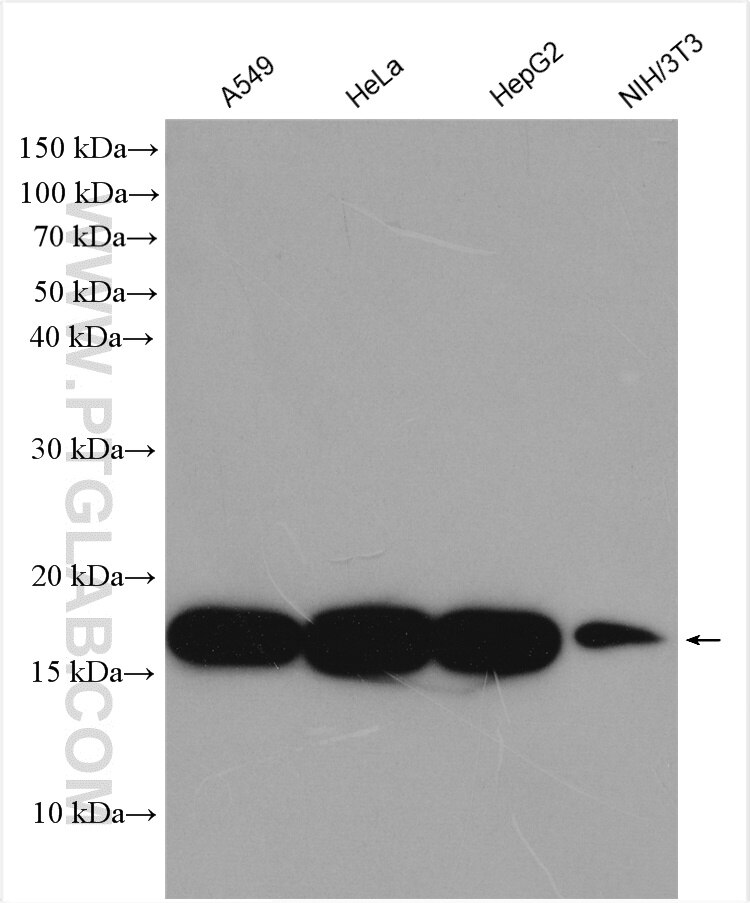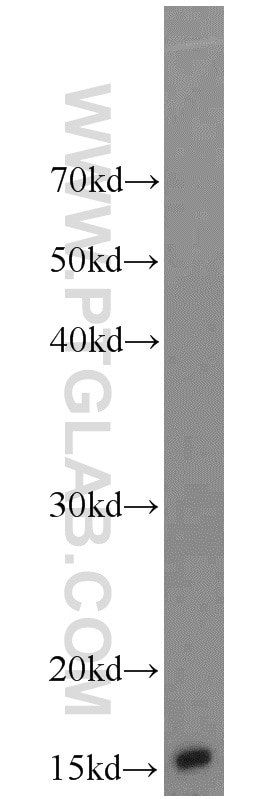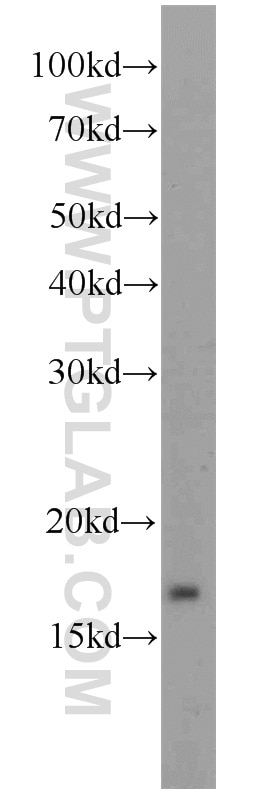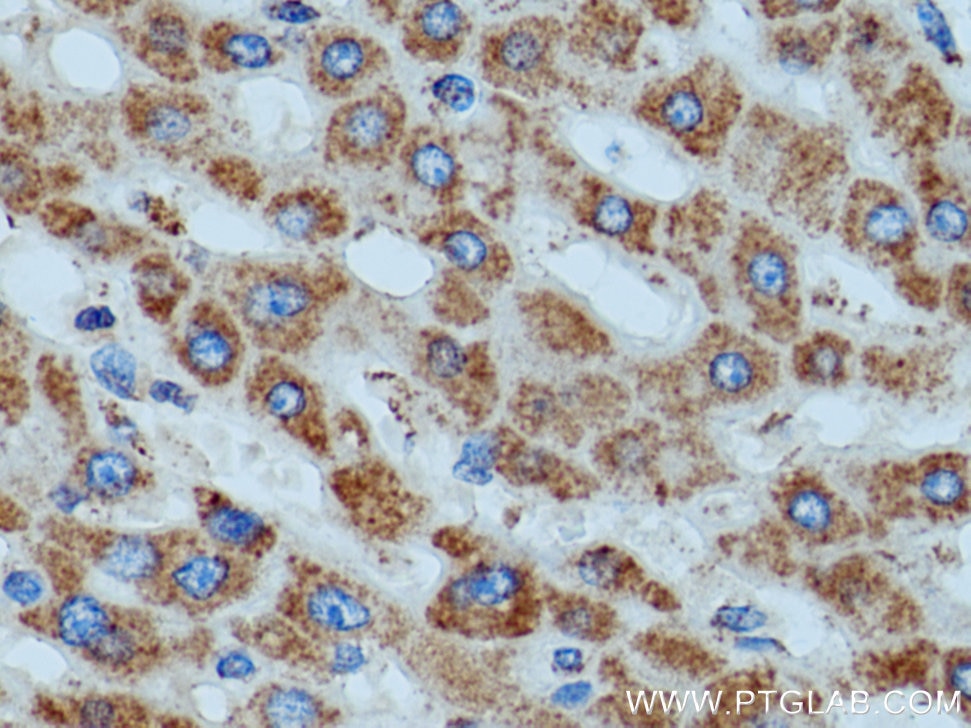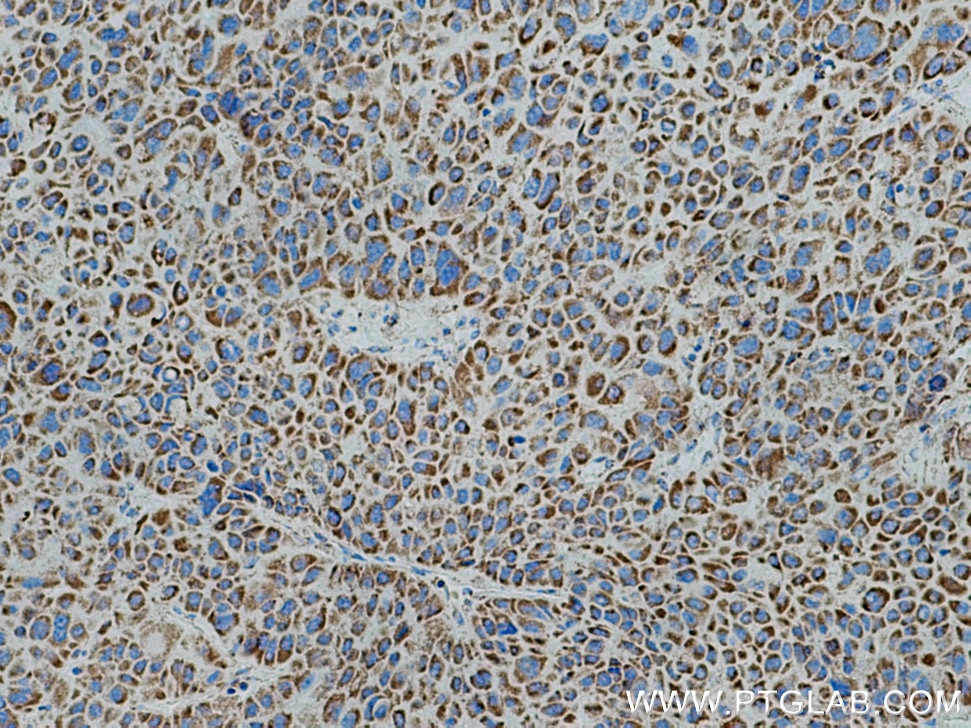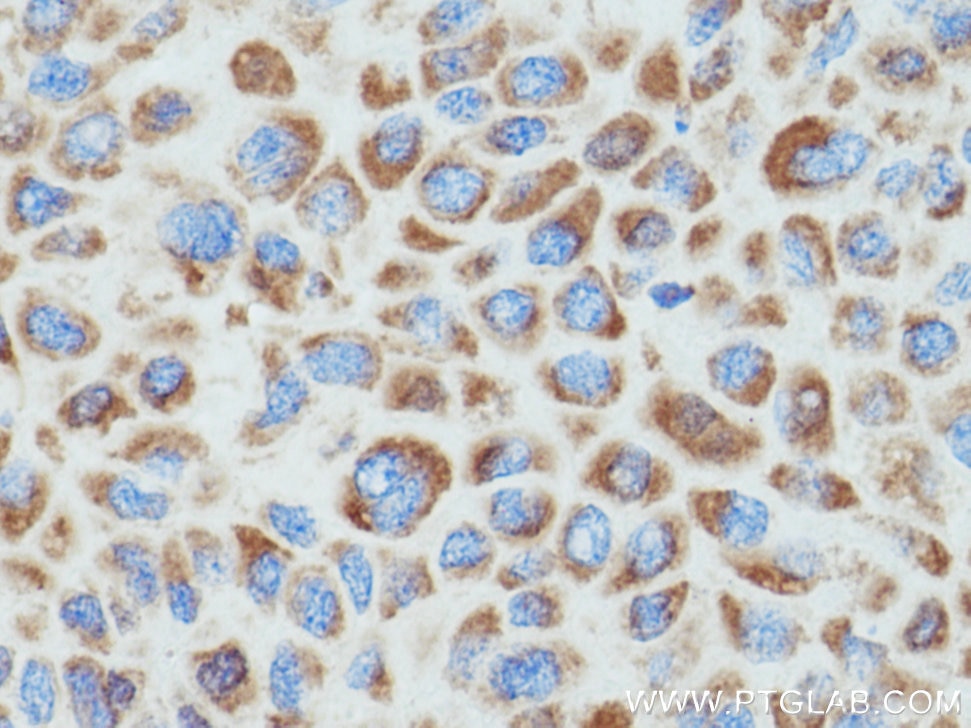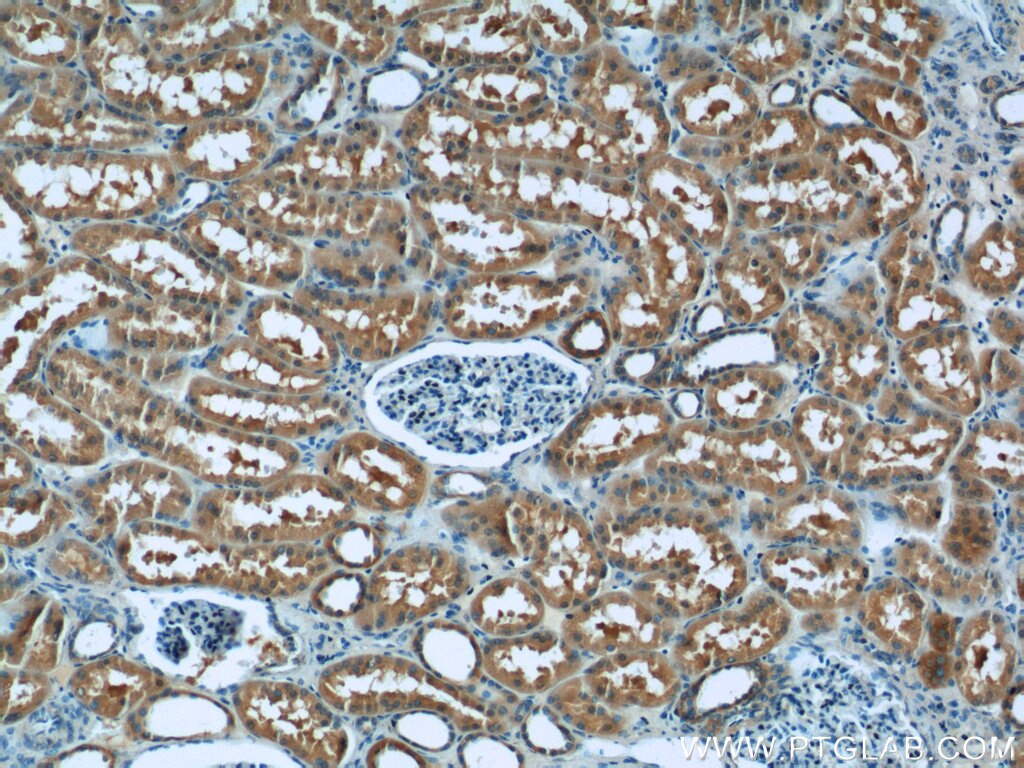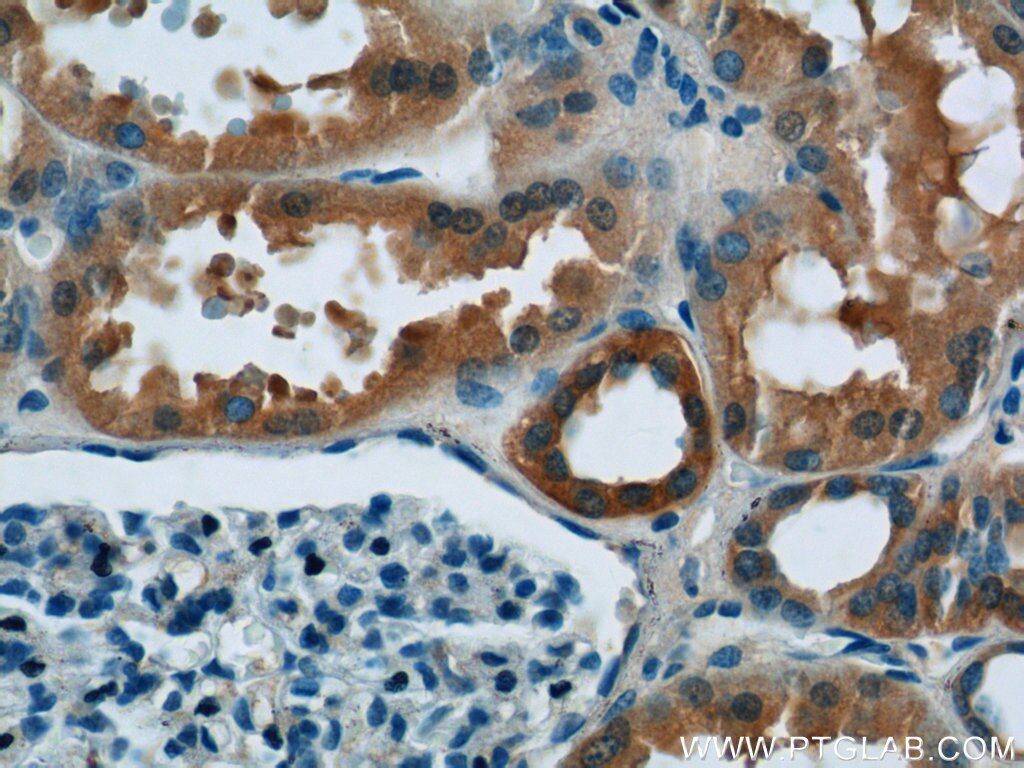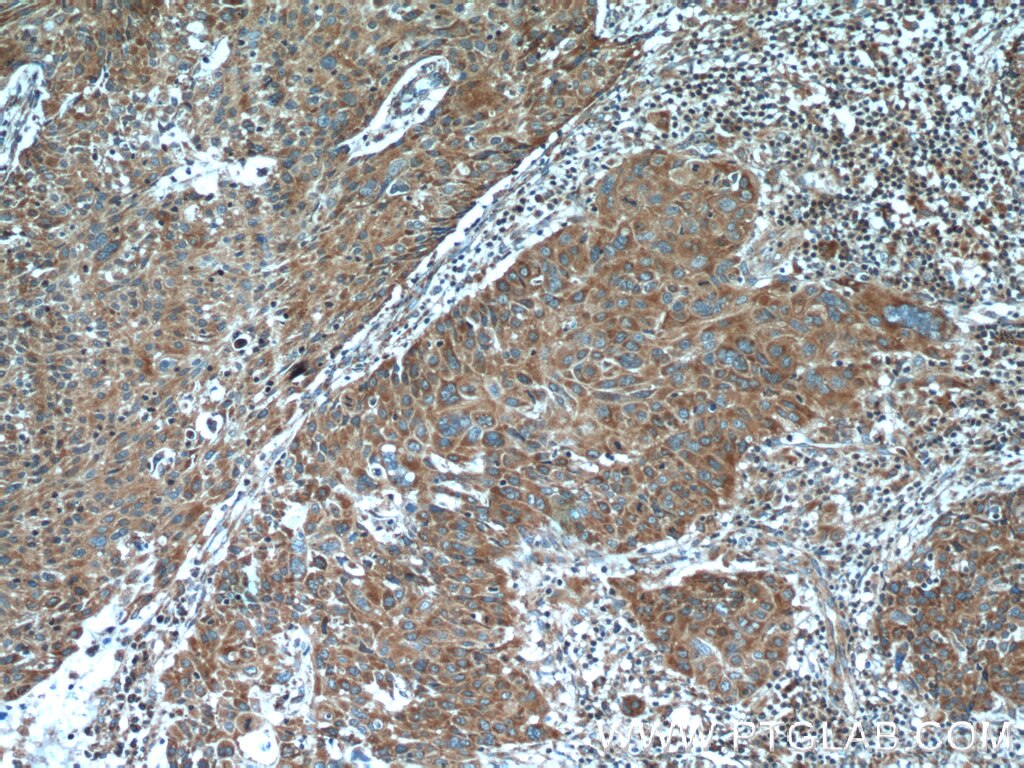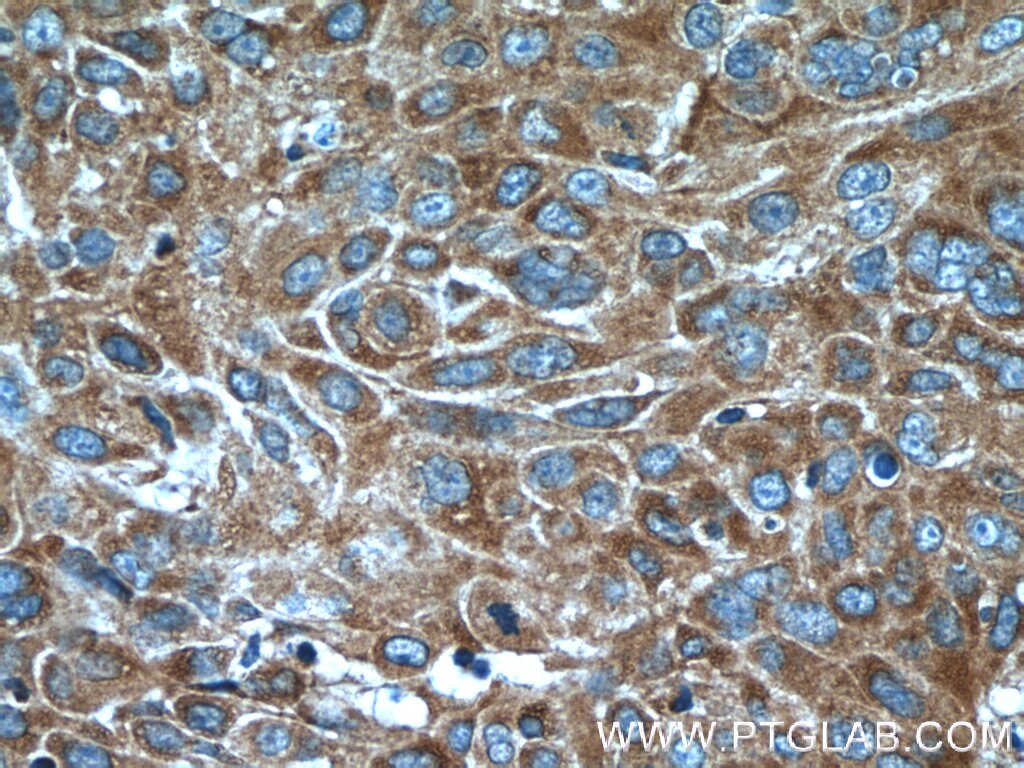Anticorps Polyclonal de lapin anti-ATP5D
ATP5D Polyclonal Antibody for WB, IHC, ELISA
Hôte / Isotype
Lapin / IgG
Réactivité testée
Humain, souris
Applications
WB, IHC, IF, ELISA
Conjugaison
Non conjugué
N° de cat : 14893-1-AP
Synonymes
Galerie de données de validation
Applications testées
| Résultats positifs en WB | cellules A549, cellules HeLa, cellules HepG2, cellules NIH/3T3 |
| Résultats positifs en IHC | tissu de cancer du foie humain, tissu de cancer du poumon humain, tissu rénal humain il est suggéré de démasquer l'antigène avec un tampon de TE buffer pH 9.0; (*) À défaut, 'le démasquage de l'antigène peut être 'effectué avec un tampon citrate pH 6,0. |
Dilution recommandée
| Application | Dilution |
|---|---|
| Western Blot (WB) | WB : 1:1000-1:4000 |
| Immunohistochimie (IHC) | IHC : 1:200-1:600 |
| It is recommended that this reagent should be titrated in each testing system to obtain optimal results. | |
| Sample-dependent, check data in validation data gallery | |
Applications publiées
| WB | See 8 publications below |
| IF | See 1 publications below |
Informations sur le produit
14893-1-AP cible ATP5D dans les applications de WB, IHC, IF, ELISA et montre une réactivité avec des échantillons Humain, souris
| Réactivité | Humain, souris |
| Réactivité citée | Humain, souris |
| Hôte / Isotype | Lapin / IgG |
| Clonalité | Polyclonal |
| Type | Anticorps |
| Immunogène | ATP5D Protéine recombinante Ag6682 |
| Nom complet | ATP synthase, H+ transporting, mitochondrial F1 complex, delta subunit |
| Masse moléculaire calculée | 17 kDa |
| Poids moléculaire observé | 15-17 kDa |
| Numéro d’acquisition GenBank | BC002389 |
| Symbole du gène | ATP5D |
| Identification du gène (NCBI) | 513 |
| Conjugaison | Non conjugué |
| Forme | Liquide |
| Méthode de purification | Purification par affinité contre l'antigène |
| Tampon de stockage | PBS with 0.02% sodium azide and 50% glycerol |
| Conditions de stockage | Stocker à -20°C. Stable pendant un an après l'expédition. L'aliquotage n'est pas nécessaire pour le stockage à -20oC Les 20ul contiennent 0,1% de BSA. |
Informations générales
The mitochondrial F1Fo-ATP synthase complex uses energy derived from a proton gradient to synthesize ATP. The ATP5D gene encodes the delta subunit of the mitochondrial ATP synthase F1 complex and belongs to the ATPase epsilon chain family. This gene encode the full length protein of 17 kDa with a transit peptide of 22 amino acid.
Protocole
| Product Specific Protocols | |
|---|---|
| WB protocol for ATP5D antibody 14893-1-AP | Download protocol |
| IHC protocol for ATP5D antibody 14893-1-AP | Download protocol |
| Standard Protocols | |
|---|---|
| Click here to view our Standard Protocols |
Publications
| Species | Application | Title |
|---|---|---|
Theranostics AdMSC-derived exosomes alleviate acute lung injury via transferring mitochondrial component to improve homeostasis of alveolar macrophages. | ||
Int J Mol Sci CA9 Silencing Promotes Mitochondrial Biogenesis, Increases Putrescine Toxicity and Decreases Cell Motility to Suppress ccRCC Progression. | ||
Front Aging Neurosci Hippocampus-Based Mitochondrial Respiratory Function Decline Is Responsible for Perioperative Neurocognitive Disorders. | ||
Am J Physiol Cell Physiol 3-MST/H2S protects cerebral endothelial cells against OGD/R-induced injury via mitoprotection and inhibition of the RhoA/ROCK pathway. | ||
J Neuropathol Exp Neurol Altered Mitochondria, Protein Synthesis Machinery, and Purine Metabolism Are Molecular Contributors to the Pathogenesis of Creutzfeldt-Jakob Disease. | ||
Cell Death Dis Nitric oxide triggers the assembly of "type II" stress granules linked to decreased cell viability. |
